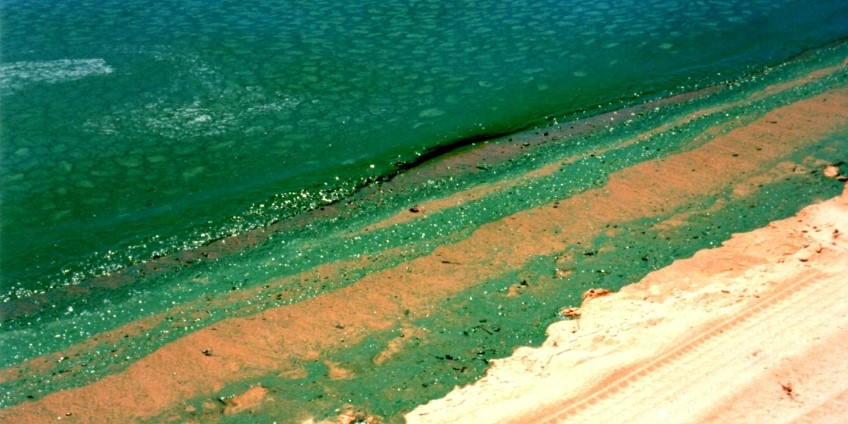The term algal blooms may be used to describe macroalgae, which are large visible free floating or rooted plants, or microalgae which require a microscope to see but in mass are highly visible.
Both macroalgae and microalgae (phytoplankton) are natural and desirable components of aquatic ecosystems.
What causes algal blooms?
Algal blooms are natural phenomena that occurred before human development in response to changes in temperature, light, rainfall or changes in limiting nutrients.
Watershed clearing, agriculture and urban discharges add more nutrients, light and organic matter to waterways. This leads to increased frequency and duration of algal blooms, and in some cases a switch to more toxic species. Persistent and widespread blooms lead to loss of biological function of the waterway.
Extreme macroalgal growth can completely dominate an estuary or river, such as in the Bindjareb Djilba (Peel-Harvey) during the late 1980s and in the Oyster and Princess Royal Harbours. In these cases, macroalgal blooms shaded seagrasses and led to their loss or decline.
In some cases, phytoplankton can also dominate and cause ecosystem collapse. In the Bindjareb Djilba (Peel-Harvey) in the 1990s the toxic phytoplankton Nodularia spumigena replaced the macroalgae that had smothered the seagrasses.
Harmful algal blooms
The term ‘harmful algal bloom’ is used for those phytoplankton that sometimes produce toxins and affect either aquatic life, such as fish, or human health. Harmful algal blooms are a global problem often seen in shellfish cultivation or aquaculture.
Nuisance algal blooms
Nuisance algal blooms are not known toxin-producing harmful algal blooms but may discolour the water and may leave residue on the skin of swimmers. High cell densities of nuisance blooms can contribute to fish kills through the depletion of oxygen in the water and/or the clogging of fish gills.
For natural waters, surveillance of phytoplankton is undertaken statewide in at-risk rivers and estuaries. You can read more on the Healthy Estuaries website.
In the event of an algal bloom, samples are collected and sent to our Phytoplankton Ecology Unit. Samples are analysed and the Department of Health is contacted if necessary. The Department of Health liaise with relevant local governments to issue a health warning when required.
We also work with Department of Primary Industries and Regional Development to respond to fish kill events.
Read more in our fish kills and algal blooms infographic and algal blooms fact sheet.
Report algal blooms
Show moreIf you see an algal bloom please report it to:
- our ALGALWATCH team on 08 6250 8064 (office hours) or email peu@dwer.wa.gov.au
- your nearest Department of Water and Environmental Regulation office
- the Department of Biodiversity Conservation and Attractions (for the Swan Canning Riverpark) on 9278 0900.
Health and safety
Show moreContact with some algal species can be harmful for humans and pets - if you notice signs of an algal bloom it is recommended that you and your pets do not go swimming.
Some species of algae produce a toxin that can contaminate wild shellfish and make them unsafe to eat.
For more information go to the Department of Health.



